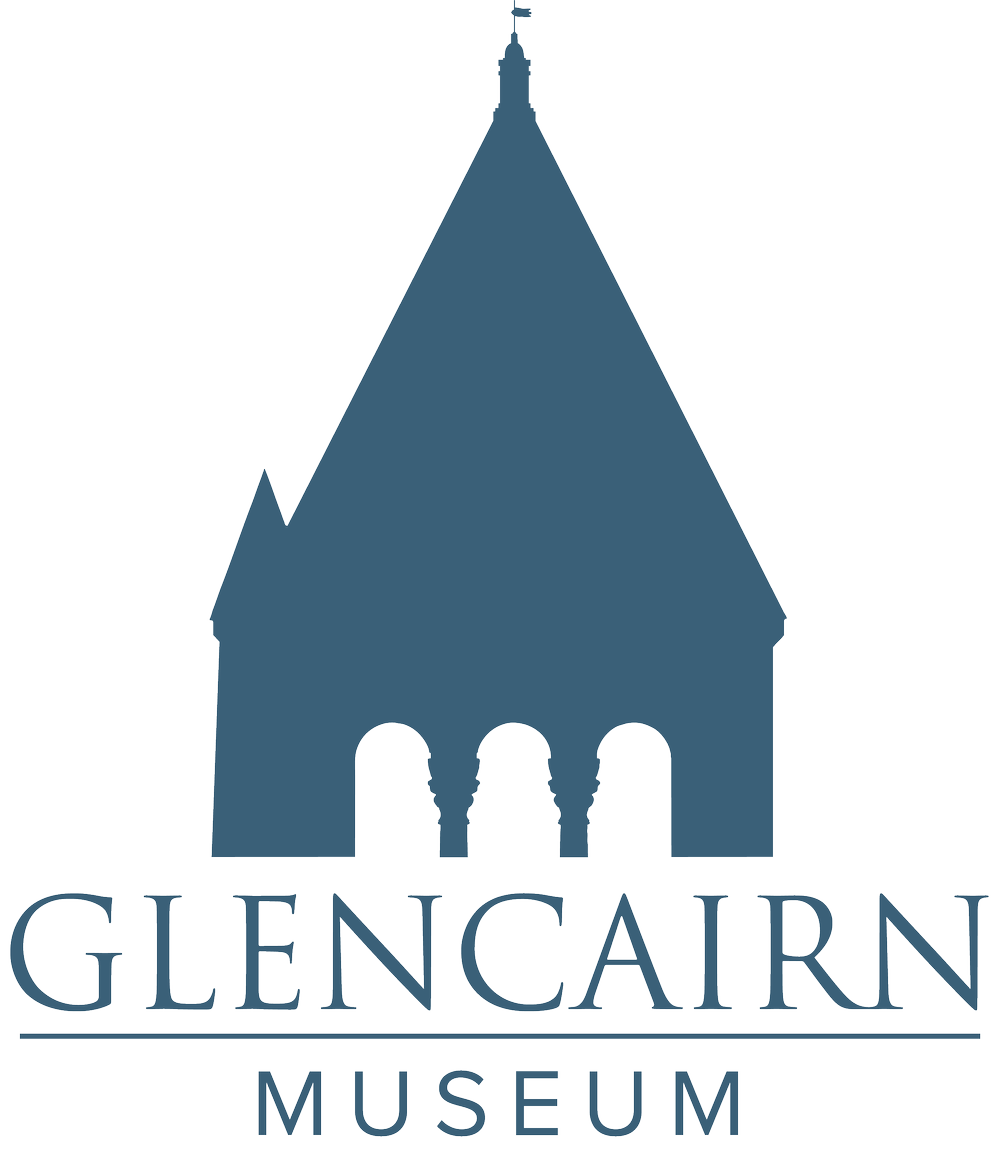Glencairn Museum News | Number 5, 2011
Dust jacket cover for Bryn Athyn Cathedral: The Building of a Church by E. Bruce Glenn. Photograph by Hal Conroy.
Figure 1: A nighttime view of Bryn Athyn Cathedral's council hall and Ezekiel tower (from page 37 of Bryn Athyn Cathedral: The Building of a Church). Photograph by Hal Conroy.
Raymond Pitcairn supervised the construction of Bryn Athyn Cathedral, a Gothic- and Romanesque-style complex, before turning his attention to the construction of his own home, Glencairn, a castle-like mansion in the Romanesque style. The Cathedral was dedicated in 1919, and Glencairn was built between 1928 and 1939. The design of both buildings evolved organically, using scale and full-sized models rather than relying exclusively on predetermined architectural plans. Most of the work was done in shops set up near the building site, including an architectural studio, stone shop, woodworking shop, modeling shop, metal shop, stained glass studio, and a glass factory. Today both buildings are part of the Bryn Athyn Historic District, a National Historic Landmark.
Figure 2: Winfred S. Hyatt, Raymond Pitcairn, and Theodore Pitcairn (left to right), pose in the south porch doorway of Bryn Athyn Cathedral. This photograph is in the collection of the Glencairn Museum Archives, Bryn Athyn, PA.
Pitcairn documented the construction of the Cathedral by taking thousands of photographs and saving copies of his voluminous correspondence. In the early days of the project a colleague encouraged him to write a book about the unique philosophy and methods he employed in the building of the Cathedral. While Pitcairn did produce an early draft of a manuscript titled, "Bryn Athyn Church: The Manner of the Building and a Defence Thereof," it was never published.
E. Bruce Glenn began work on Bryn Athyn Cathedral: The Building of a Church in the early 1960s. Glenn, a professor of English who served as Dean of Bryn Athyn College from 1967 to 1977, was a nephew of Raymond Pitcairn. Glenn was given full access to Pitcairn’s own manuscript, letters, and photographic material, and submitted drafts of early chapters to Pitcairn for his input. Copies of letters have survived with annotations penciled in by Pitcairn for Glenn’s benefit. Raymond Pitcairn passed away in 1966, five years before the book’s publication in 1971.
Figure 3: The interior of Bryn Athyn Cathedral's nave from the west end looking toward the chancel in the east (from page 7 of Bryn Athyn Cathedral: The Building of a Church). Photograph by Hal Conroy.
The second edition of the book, released in April, contains Glenn’s original text, with minor revisions to reflect updated information. In addition, the new edition includes extensive source citations not included in the original, additional historic photographs, and stunning all new color photography by C. Harrison (“Hal”) Conroy. The second edition was produced by a committee made up of the following individuals: Jim Adams (Bryn Athyn Cathedral Director), Kent Cooper, Vera P. Glenn, Ed Gyllenhaal, Kirsten Hansen Gyllenhaal (project manager), and Brian D. Henderson.
Bryn Athyn Cathedral, the episcopal seat of the General Church of the New Jerusalem (part of a Christian denomination known as the New Church), remains a unique and remarkable architectural complex. In 1917, two years before its dedication, noted architectural historian and medievalist A. Kingsley Porter expressed his reaction upon seeing Bryn Athyn Cathedral for the first time:
Figure 4: A view of the Cathedral gardens looking out of the cloister arcade toward the corner of the nave (from page 32 of Bryn Athyn Cathedral: The Building of a Church). The west porch is just out of sight. Photograph by Hal Conroy.
“I had expected much of the Bryn Athyn church, but nothing like what I found. If it existed in Europe, in France or England, it would still be at once six centuries behind, and a hundred years ahead of its time. But on the soil of great architectural traditions, it would be in a measure comprehensible, and the presence in the neighborhood of the great works of the past would in a way prepare the mind for this achievement of the present age. For your church, alone of modern buildings, in my judgment, is worthy of comparison with the best the Middle Ages produced” (A. Kingsley Porter. Letter to Raymond Pitcairn. 24 October 1917. Glencairn Museum Archives, Bryn Athyn, PA).
It has been said that “history is no more than memories refreshed.” Perhaps the second edition of Bryn Athyn Cathedral: The Building of a Church will inspire a new generation of students and scholars to study this remarkable edifice and the historical circumstances that led to its creation. The book sells for $44.95 at the Glencairn Museum gift shop and the Bryn Athyn Cathedral Bookstore.
(KHG/CEG)
A complete archive of past issues of Glencairn Museum News is available online here.





